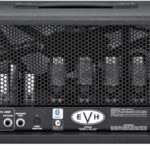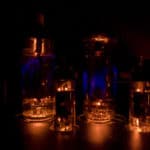The first thing that comes to your head when you listen to the term “tube amps” is the spicy, warm sound that they can make when cranking their power stage.
However, let me tell you that is not the only important feature existent in this gear, what is more, that characteristic is not just relegated to power tubes.
In the preamp section, we can find more glass valves smaller in size that influence the equipment performance.
Of course, we are talking about preamp tubes, you might have heard about them but what is their job? Do they really affect your tone?
In valve amps, preamp tubes raise an important role in pre-amplifying the signal. Although they also take part in shaping the tone, they don’t affect it as much as power tubes do.
As far as I concern, this might be confusing for some people, even if you are used to or have a tube amp.
For those players I have the solution, through this article I will be explaining the various attributes presented in preamp tubes, I will try to evacuate the doubts that may come up and you will know everything needed about this topic afterward.
What are preamp tubes exactly?
Preamp tubes are small vacuum valves presented in most kinds of guitar amplifiers, as their name evokes, they are found in the preamp section and they are in charge of amplifying the signal level to line level.
However, they can be used in different amp sections including not only EQ stages and built-in tube-driven effects (such as tremolo or reverb) but also the phase inverter which goes straight to the output stage.
Furthermore, what these tubes do is convert the low-voltage audio signal into a higher-voltage signal that can be picked up by the power section of the guitar amp.
The preamp tube is the first gain stage, in this section, the signal is not converted to be driven by the speaker, what happens instead is that the signal is amplified up to a point where the output tubes can receive it to be further amplified and later driven through the speakers, resulting in the output.
Do preamp tubes define the sound of an amp?
Every component within an amp is involved in shaping sound and tone, it is not something relegated just to a single section or tube.
In the case of preamp tubes, they don’t strictly shape or model the guitar’s signal but when it reaches a gain stage from input to output within the whole chain this audio is entirely amplified by preamp tubes.
Consequently, the performance of these valves takes an important role and raises relevance in the resultant sound, tone, and nature of the signal.
What is even more, at this stage preamp tubes provide different features, they can compress, clean, or tighten the sound.
Another remarkable aspect when defining sound is that the same way power tubes do, preamp tubes when toughly driven produce distorted sounds plus they can be driven along various chain-up gain stages, mainly in high-gain equipment.
In this particular case, a great amount of the distortion you listen to comes from the impact that preamp-tube distortion has.
Most popular preamp tube types and their sound
In the market, we can find a vast range of several preamp tubes, they usually are ninepin tubes but we can also see some octal tubes.
As there are many preamp tubes, I will leave you the most popular outlined below.
12AX7
When talking about preamp tubes, the 12AX7 is undoubtedly the most common type, it is also known as ECC83 in Europe.
This type of tube provides a strong gain plus it is employed in the construction of various famous amplifiers such as Vox, Supro, and even Marshall DSL100
12AT7
The existence of these valves in an amp will mean that the equipment offers not only reverb effects but also a phase inverter section.
These tubes are commonly used at those stages, they produce a bit less gain than the 12AX7 but they need a different voltage to work properly, in addition, they are used mainly by US amps brands, Fender amps particularly.
12AY7
The 12AY7 is well-known because was originally found on the milestone Fender Tweed amp, these valves were located at the first gain stage.
They have less gain than “AX” as well, which will be translated into a weaker distortion at the early stages of the amp.
5751
This tube is similar to 12AT7, not as gain as 12AX7 thus less distortion at early stages but it usually works as a lower-gain replacement for the latter.
As you may notice, they are typically used to replace high-gain preamp tubes in noisy amps to get a quieter outcome.
EF86 & 5879
When talking about pentode preamp tubes, the most popular are the EF86, also called 6267, and the 5879.
The first one occurs in the first Vox amps but nowadays can be found in some models from Dr. Z, Matchless among others while 5879 is a really popular tube because was used in Gibson GA-40 Les Paul amps back in the 50s and 60s.
Both of them make the sound sturdy, vigorous, and thicker compared to the 12AX7, they provide even higher gain factors.
However, these tubes do not distort the same way AXs do, what they do instead is send the fed-up signal to the next stage.
What other kinds of tubes are on an amp?
In valve amplifiers we can find both, preamp and power tubes although they are placed at different stages within the gear, they are involved in modeling and controlling tone plus amplifying the signal.
Regarding preamp tubes, we have already discussed them but we still know very little about power tubes.
Power tubes are located in the back part of the amplifier, just next to preamp tubes but you can differentiate them because power tubes are bigger in size, they are in charge not only of amplifying the signal but also shaping the output tone.
In addition, the same way as preamp tubes do, valves in the power section provide warm, rich, natural distortion when they are overheated and pushed to the limit.
Apart from the mentioned types of tubes, amplifiers also have one more tube which is called rectifier.
What rectifiers do is convert the voltage from the power stage in the amp, the AC provided by the power source needs to be DC to be properly processed by the internal circuits within the equipment.
Rectifier tube amps were really common but in the 50s solid-state amps appeared so they were forsaken and replaced by the latter.
Fortunately, in 1991 MESA Boogie released the MESA Dual Rectifier Amplifier where you can decide between tubes or diodes.
These selectable rectifications offer a wide range of tonal variations, what is more, they also launched another amp called MESA Triple Rectifier which provides even more options.
If you feel curious and you intend to learn more as regards these two amazing amps we have the solution, we have an article comparing both of them, I will leave you the link below.
Do preamp valves sound better at high volumes?
Up to this point, you may know that tube amps reach their best balance and richest tone when cranked due to the power tubes starting distorting the sound.
In the case of preamp tubes, they can also be overdriven when their volume is turned up, they can show a warm and very musical distortion.
Unfortunately, preamp valve distortion is not loud enough, that’s why the signal feeds another amp to make it louder.
However, that output is still usable, preamp tube distortion is smooth and warm with a bit of fuzz, combined with power-tube distortion sounds amazing.
Although the overdriven effect that power tubes give is in a way better than preamp distortion, in the preamp section occurs most of the clipping that is needed to feed up the signal.
Furthermore, I would say that the best preamp section performance is achieved when playing at high volumes, otherwise, you won’t let your equipment shine plus won’t enjoy the whole experience.
Can you play valve amps at low volumes?
As explained before, the tube equipment is on top of the world when you turn the master volume up, it hits groundbreaking tones because of the overdriven sound.
However, although they shine when cranked, they can also be used at low volumes.
Playing at lower volumes is great for bedroom practice or if you live in an apartment where a loud guitar solo will grind your neighbors’ gears.
Besides, if your tube amp is a low-wattage gear, you wouldn’t have any problem because they will reach the distorted tones plus the output won’t be so noisy.
Having said that, you will decide whether to play at low or high volumes but you must know that tube amps are intended to provide overdriven sounds when cranked.
Remember that to make your amp sound with flying colors you will have to increase the output, otherwise, you will be disregarding the equipment’s potential
Furthermore, the amount of output is considered one of the most relevant features in tube amps so it can be widely extended.
If you are looking for further information you can check the article I will be leaving below, it contains every aspect you need to know about tube amps at low volumes.
Are preamp tubes more impactful for the tone at low volumes?
Whereas power tubes work intensively to shape the tone, preamp valves take an important role in the whole process of modeling the signal.
As both sections have their relevance it is difficult to answer this question.
Perhaps when power tubes are not pushed to the max, the task of shaping the tone might rely more on preamp tubes, however, I wouldn’t say that they are more impactful. Nevertheless, some modern high-gain amps present a feature that allows creating controlled tube distortion by cascading multiple gain stages, one right after the other.
In those cases, preamp tubes could be more influential to the tone, due to power tubes will be used just to amplify the signal.
By combining several gain stages you can get a saturated, fierce lead tone that could be sustained endlessly.
What are the most important tubes on an amp?
Probably power tubes are the most important. Reference to the companion post to this article.
Needless to say, every section of the equipment is important, there aren’t most or least relevant in the different stages.
When talking about the obtained result, probably power tubes will carry the day, they are the ones that truly show the specific character of the sound, sculpting the tone through compression and natural distortion.
Nonetheless, power tubes deserve their own post because they are similar to preamp tubes; they work differently, though.
Fortunately, we have already covered that issue so I encourage you to give a look at the article we posted about those tubes, I will give you the link just at the end of this composition.

Hello there, my name is Ramiro and I’ve been playing guitar for almost 20 years. I’m obsessed with everything gear-related and I thought it might be worth sharing it. From guitars, pedals, amps, and synths to studio gear and production tips, I hope you find what I post here useful, and I’ll try my best to keep it entertaining also.





